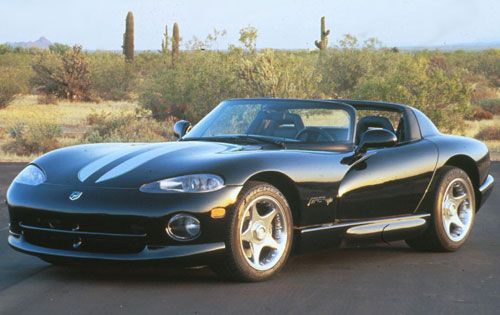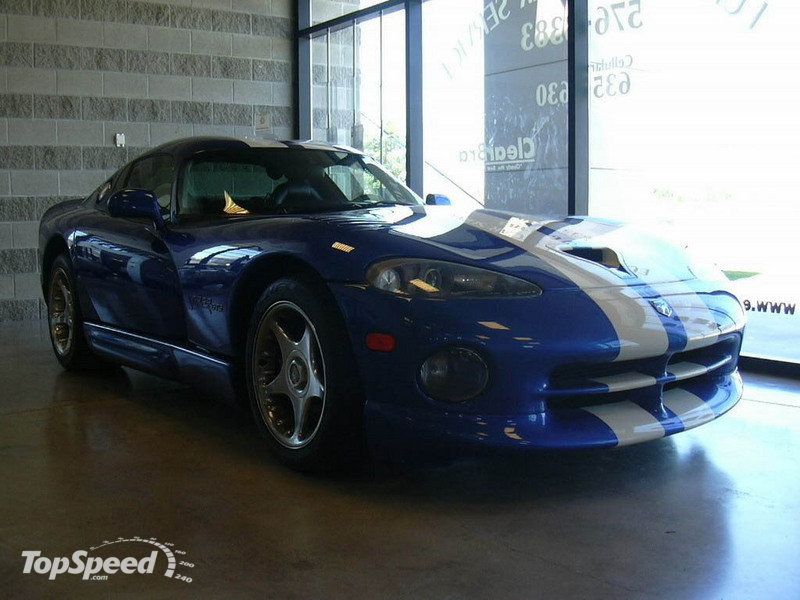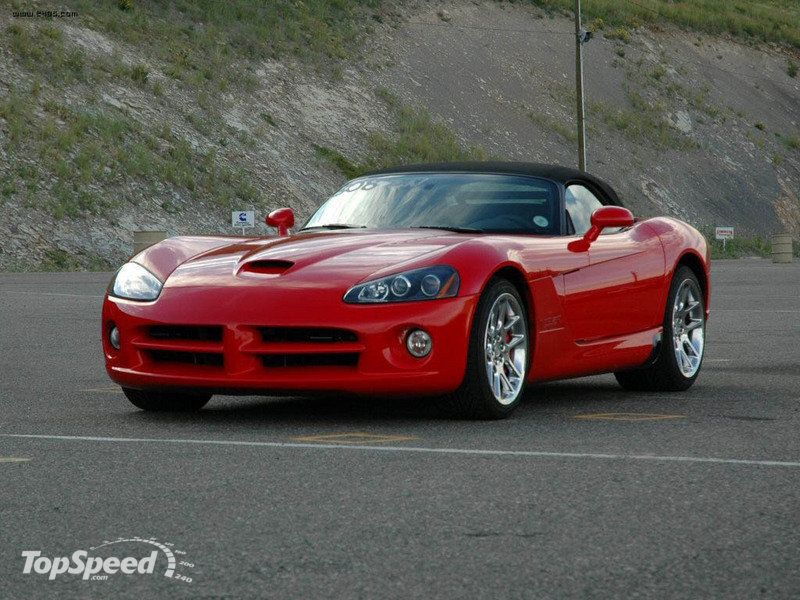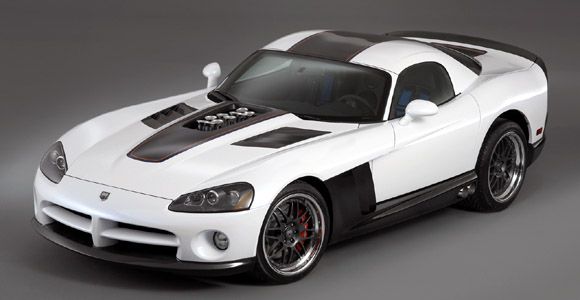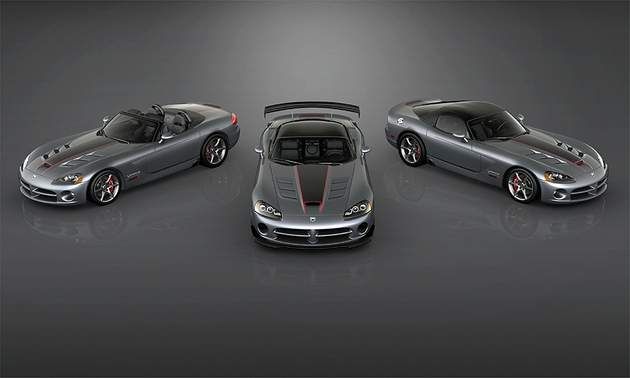It was created at a time when Chrysler->ke21 was pretty much as broke as a third world country. Their cars were horrendous boxes on wheels and they could only manage a few miles before breaking down. Needless to say, 1989 was not a good year for the Detroit automaker.
Nonetheless, a crack team of 85 engineers was put to work on one of the most iconic sports cars in our country's short history. It might not have the same legacy as the Corvette->ke1280 or the Mustang->ke428, but the Dodge Viper had something completely different. Insanity.
The Viper was never that good, but that’s why we love it. It didn’t have any fancy toys, or even windows in the early stages, but it was brutally fast and crude in every way. Nothing was quite as fun to drive around a track as the Dodge Viper->ke1404.
Sadly, its time is at an end. Chrysler may still be making terrible cars, but the rest of the world has moved on. This month will be the last production month for the Viper. We, at TopSpeed, have produced a brief look at the lovable Dodge->ke28.
Hit the jump for the rest of the story.
At the time, Bob Lutz was in charge at Chrysler and he had a revolutionary idea. Why not create a modern day muscle car? Lutz went to talk to Tom Gale, chief of design and a few minutes later, the car was born.
Lutz wanted a modern sports car with such features as an engine management system, new-think transmission, computer aided suspension, and world-class tires. While the Viper would use all of these tools, it wouldn’t be gadget-laden. It wouldn’t have turbochargers, anti-lock brakes, four-wheel steering, adjustable shock-absorbed damping, and all-wheel drive. The Viper would be like an old rifle.
All of this sounds crazy, but it turned out to be genius. Over at Chrysler’s Pacifica design studio, stylists had been looking at putting a V8 into a convertible sports car. It would was called the Izod and it was a concept car that the studio produced around 1985.
While the design team was doing their thing, a few executives were working on a new ultra-powerful petrol truck engine that would be able to restart a dead planet. Dodge hoped that this new motor would help boost truck sales.
Those two pieces would be like the crust and the filling of a good pie. But, without a tin to put it in, the whole thing would fall apart. The tin would turn out to be Francois Castaing, who was head of Chrysler’s Jeep and Truck Engineering division. This was a man who was involved in European motorsports as a part of Renault’s Formula One effort.
It was this man who gave Lutz the brainwave to use the new V10 truck engine for the new sports car. All the parts were there, but it was a European man who put it all together.
Back in the design studio, the team was looking over the Izod renderings. They show an open two-seater with a wide body and classic sports car long nose, short deck proportions. There were big open trailing edges in front of the doors that looked like they were from a racecar. The windshield was low, down a swept back with rollover bars that supported the head restraints. It was, in a word, gorgeous.
"The body shape really harkens back to the cars of the early to mid-'60s," said Neil Walling, then Chrysler's director of advanced and international design (under then-design chief Tom Gale), to Road & Track at the concept's debut. "Jaguars and, of course, Cobras. They were very full-bodied shapes. That had very full, round fenders. The current aero shape tends to be more of a single round shape. But the cars we looked to had more forms. More negative and positive forms. And, obviously, they were very wheel-oriented also. In the Cobra's case, they took the AC and put larger wheels and tires on it. And then they had to force the sheet metal out around them, which, of course, created the shape. If you look at the cars that came before the Cobra era in the early to mid-'50s, they were kind of flat-sided. But the tops of the forms were fairly round and fairly soft. And when you got to the '60s, they got some plan-view shape to go with that other direction or shape. The result of all that was very soft, very round. There have been so many high-tech midengine rocket ships that this seems almost a simplistic delight. There's no pretense about this car. It makes great gobs of power and puts it through enormous wheels."
When the car went into production, a few things changed. There were minor details that were adjusted, but one area really changed. The renderings had the exhaust exciting the rear of the car, but the show car did a bit more than that. It had the exhaust running out the side like a true racing car.
After the show car was created it needed a living heart under the hood. Not just anything though, something truly monumental. The car had been packaged around the V10, but could Dodge get one for the new muscle car?
For the time being Dodge would have to get creative. They took a 360 cubic-inch V8 and added two more cylinders on the front to make a crude V10. While there was certainly more work needed, the motor worked for the time being.
So, what to name this beast? Lutz and his team loved the old Cobra and in fact, the Viper had been inspired by it. Since they couldn’t use that name, Lutz chose Viper because it rolled off the tongue easily and continued the snake theme.
The Viper RT/10 debuted on January 4, 1989 at the North American International Auto Show in Detroit. Needless to say, it was a massive sensation.
The Viper became front-page news in every car magazine in the United States. Chrysler received hundreds of letters from people, begging for the Viper to be put into production. How could they say no?
On May 18, 1990, Chrysler decided the Viper’s fate. It would be put into production in limited numbers, but the story only gets better from here.
Under the hood of the production Viper was an 8.0-liter V10 that cranked out 400 horsepower and 450 pound-feet of torque. For 1992, those numbers were hugely impressive. The Viper could hit 60 miles per hour in 4.4 seconds and it would blitz the quarter mile in 13.1 seconds. Those numbers are better than most cars today and they were better than the Corvette ZR1 at that time.
That’s not to say the Viper was all good news. The car handled like a pig and it would attempt to kill you the first chance it got. The ride was very hard and it was twitchy on bumpy roads. Not to mention the RT/10 was ludicrously impractical and those side exhausts could get seriously hot, making it hard to get out after a long drive.
The new American muscle car hit dealers in 1992. Only 196 Vipers would be made, so a few of the nations 2,800 retailers would get left out. Dodge chose only the top 40 markets for premium-priced sports cars and sent the Viper on its way.
In 1992, the new Viper would cost around $50,000 with a $2,600 gas guzzle tax and a $2,330 luxury tax. Demand was so strong that dealers could have charged up to $100,000 for the car and people would buy it. People were even paying as much as $200,000 for the new Viper. Talk about insanity.
Part of the reason for this is down to the Viper's look and style. Obliviously it’s gaudy and ostentatious, but so were most muscle cars. It wasn’t going to lure people who could afford a Ferrari->ke252 or a Porsche->ke1, but it was going to draw in those people that longed for the muscle car feel and sound. This was a pure old school hot rod.
>
The year 1993 saw a few changes to the Viper. Dodge added air-conditioners, new colors, and a radio antenna to the options list. The next two years saw little change in the mean muscle car, but 1996 would be a big year for the Viper.
It was in that year that Dodge had just rolled out another masterpiece of design. It seems hard to believe that while their road cars were just plain horrid; they could still create things like this, the Viper GTS.
The GTS had a Cobra inspired roof, roll-up side windows, and exterior door handles. The exhaust was also rerouted to the back of the car to avoid any more burning incidents. The V10 gained 50 horsepower and a few other toys, such as OBD-II emissions controls, aluminum links in the suspension, and a lighter-weight frame.
The rear-exhaust also found its way to the 1996 Viper RT/10 roadster, which helped it achieve 415 horsepower.
Sadly, it wasn’t all good news for Viper. "The Dodge Viper is one of the least practical sports cars money can buy," an Edmunds.com writer concluded. "The interior reeks of cheap plastic, the gaps between exterior panels could pass for fault lines, and if the drivetrain lash doesn't slap some sense into you, nothing will. But while the Viper is easily the best performer of these cars, its ancient engineering, lack of refinement and lofty sticker price knock it to the bottom of the heap."
Nothing would change for a while for the Viper and through the years the car just kept getting new toys, but never got upgrades where it needed them the most. In 2001, the Viper got standard ABS, but that was about it until 2003.
The new SRT-10 Viper was a whole new look, but by this time, not many cared anymore. The new design was nice, but it did look a bit, been there done that. There was a bit of S2000/Corvette to it that put some off.
While the design might have changed, the components were all quite familiar. The engine got a bit bigger and 50 more horsepower came with the added size. Even the transmission was still the same. Yet, that didn’t stop it from being damn good.
This car was lighter and quicker than the old car. It could hit 60 miles per hour in 4 seconds flat and could crush the quarter mile in just 12 seconds. The interior was more refined and the controls and seat comfort were improved.
It was rough, it was mean, and it was so flashy and gaudy that it was just amazing. You could thrash it around the track and it would thank you for it. It was one of the greatest moments of the decade for Dodge.
All in all, the SRT-10 Viper had all the charm of the old car, but with some refinement to go along with it. We love the Viper and it will live long in our hearts, but sadly, as of July, the Viper is no more.
The Viper has had a few fun things done to it over its life. From concepts to racing cars, the muscle car has done it all. A few years ago, McLaren->ke284 got a hold of one and created something stunning. It seemed a bit odd that McLaren would want to work on the Viper, but Mercedes, which had ties with the supercar manufacturer, owned Chrysler at that time. So, from that unique partnership came the Diamondback Viper Concept with a McLaren-tuned V10.
The car featured a lot of carbon fiber panels and an “OmniCarbon” hood to show off the 615 horsepower engine. Only one example was ever made and the price was out of this world. The car was recently for sale at around $290,000.
One of the last special edition Vipers created was the SRT10 Final Edition. This Viper came to the show packing 600 horsepower and was covered in an evil looking black and gray paint scheme.
Production of this car was short lived and only 50 were ever made; 20 coupes, 18 roadsters, and 12 ACRs. The car had an 8.4-liter V10 with 560 pound-feet of torque. That massive engine could help the Viper hit 60 miles per hour in less than four seconds and up to a top speed of 202 mph.
It was painted a shade of graphite, with a black center stripe with red accents. There are a few unique badges, and the coupe and ACR versions got a black windshield surround. The interior was redone as well, with red accent stitching, red halo outlines for the instrument cluster, and a numbered dash plague.
This one of the final special edition production Vipers ever made.
Yet, amazingly, anybody who wants the Viper can get the Viper. Dodge is willing to sell the rights to the name, body molds, parts, and tools related to the car. The new buyer could also assume responsibility for replacing parts on existing Vipers.
It’s very odd, but it has happened before. Back in the 1960’s when Studebaker went bust, a pair of dealers bought the rights to the Avanti. For decades after that, the Avanti was built and sold to customers.
We have to remind you that the next generation Dodge Viper is expected to be unveiled in 2012, so there is still a chance the old girl will see the light of day once again.

